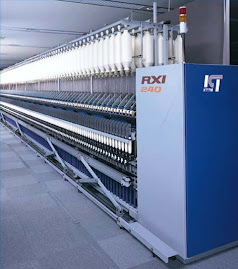Knitting
After weaving, the most prevalent method of fabric construction is knitting. Its popularity has grown tremendously over the recent years . Today, knitting is a very big industry which has two main divisions.
One division manufactures knitted goods for apparel production, sewing centers, consumers and others. The other division manufactures finished apparel such as hosiery, sweaters and underwear.
The knitted fabric has the advantage of stretchability which provides fit and comfort. It also gives warmth. At the same time, they are porous and provide breathing comfort. It is light in weight and wrinkle- resistant. However, certain specialized techniques like Pak- nit or Permasized have to be used so that it may not shrink too much. Also, care should be taken so that not a single loop breaks. If even one loop breaks, a hole is made and it starts running. This disadvantage can be eliminated by variation in the stitch that protects the fabric from raveling.
The kind and quality of the needle also affect the quality of the knitted fabric. Different kinds of needles are used in knitting latch needle, spring- beard needle, compound needle etc.
Weft and warp knitting
There are two major varieties of knitting: weft knitting and warp knitting. In weft knitting, one continuous yarn forms courses across the fabric. In warp knitting, a series of yarns form wales in the lengthwise direction of the fabric.
The knitting machine also called knitting frame, knitting loom, or hand knitting machine, is used to manufacture knit fabrics. These fabrics are produced on a fixed bed of hooked needles. The Knitting machines can be hand driven or motor powered.
The machines come in domestic and industrial models, with either flat or circular beds that produce rectangular or tubular fabrics. The fabric produced by a knitting machine has a more fine texture than hand-knitted fabric.
Chemical Finishing
-
1 Chemical Finishes
Chemical finishing is usually applied to fabric padding following by curing
and drying. This also called wet finishes. Applied to fab...
15 years ago



No comments:
Post a Comment